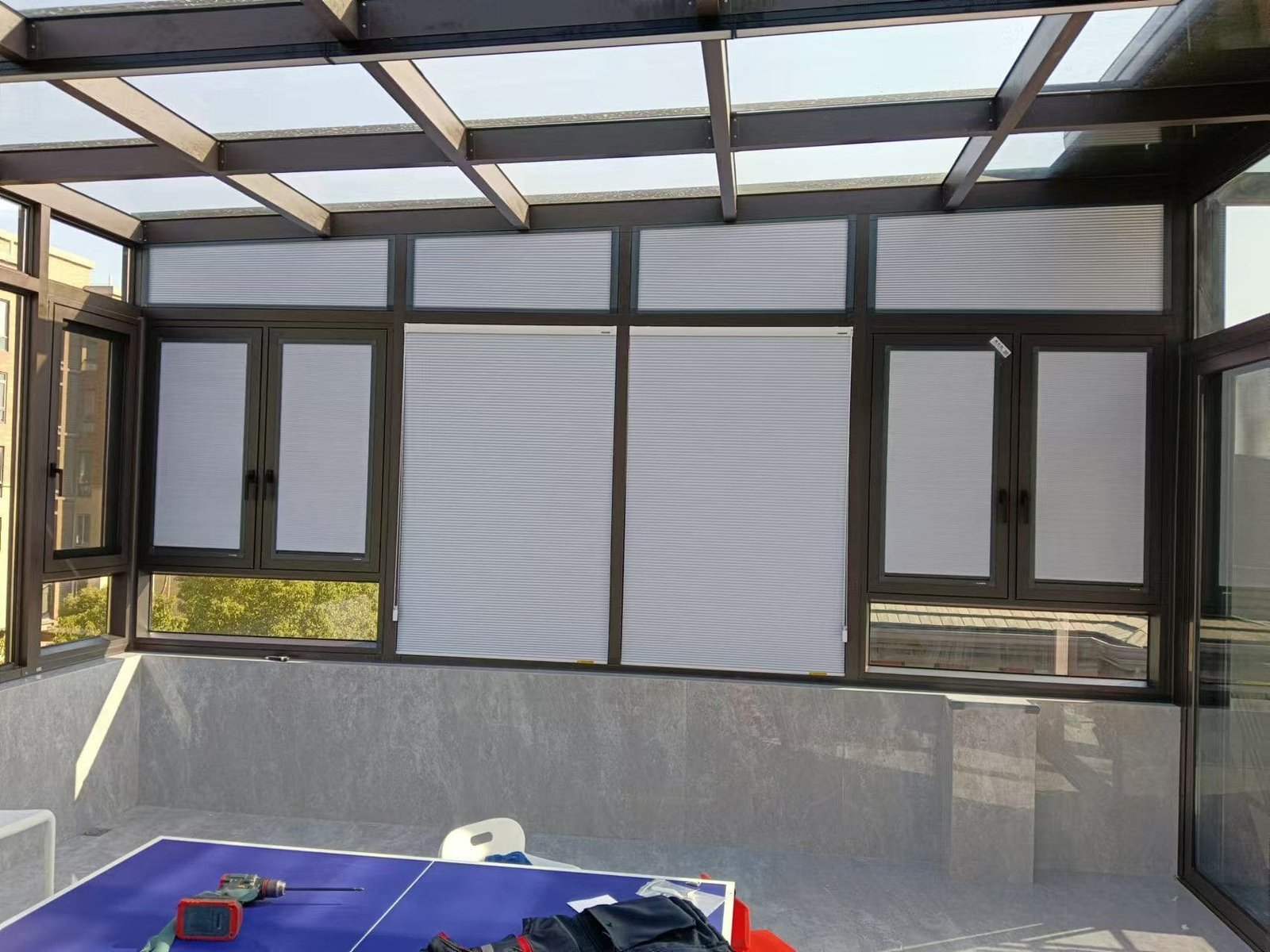Living with noise pollution can be incredibly frustrating. Whether it's street traffic, noisy neighbors, or construction work, unwanted sound can disrupt your peace and productivity.
While no window treatment can completely soundproof a room, cellular honeycomb blinds[^1] are most effective at reducing noise, offering up to 50% sound reduction when properly installed. Their unique hexagonal cell structure traps air and creates an insulating barrier against sound waves.

I've spent years helping clients find the right window treatments for noise reduction. Let me share what I've learned about the effectiveness of different blind types and how to maximize their soundproofing capabilities.
Do Honeycomb Blinds Really Reduce Noise?
Many homeowners are skeptical about honeycomb blinds' noise-reducing claims. I was too, until I started testing different products and seeing the results firsthand.
Honeycomb blinds can reduce noise by 25-50% depending on cell size and material quality. Double-cell designs offer the best performance, as their layered structure creates multiple air pockets that absorb sound waves.

The effectiveness of honeycomb blinds for soundproofing depends on several key factors:
Cell Size and Structure
- Single-cell: 25-35% noise reduction
- Double-cell: 35-50% noise reduction
- Triple-cell: Up to 55% noise reduction
Material Density
- Standard polyester: Good sound absorption
- Spunlace fabric: Better sound dampening
- Dense non-woven fabric: Best noise reduction
Installation Method
| Method | Sound Reduction | Installation Complexity |
|---|---|---|
| Inside Mount | Good | Moderate |
| Outside Mount | Better | Easy |
| Double Blinds | Best | Complex |
From my experience working with various installations, proper sizing and mounting are crucial. An outside mount with side channels can increase noise reduction by creating a better seal around the window.
What Type of Blinds is Best for Noise Reduction?
When clients ask about soundproofing, they're often surprised to learn that not all blinds are created equal in terms of noise reduction.
After cellular shades, heavy-duty roller blinds[^2] with sound-dampening fabric offer the next best noise reduction, followed by roman shades with thick fabric. Traditional venetian blinds provide minimal sound blocking unless combined with other treatments.

Let's break down the effectiveness of different blind types:
Comparative Sound Reduction Performance
| Blind Type | Noise Reduction | Best Use Case |
|---|---|---|
| Cellular Shades | 25-50% | All-around soundproofing |
| Roller Blinds | 15-30% | Large windows |
| Roman Shades | 20-35% | Decorative spaces |
| Vertical Blinds | 10-20% | Sliding doors |
| Venetian Blinds | 5-15% | Basic light control |
The key to maximizing noise reduction is understanding how different materials and construction methods affect sound waves. Dense fabrics and layered designs generally perform better than thin, single-layer options. I always recommend considering the specific noise source and window size when selecting blinds for soundproofing.
What Are the Best Vertical Blinds for Noise Reduction?
Sliding doors and large windows present unique challenges for sound control. Many of my clients struggle to find effective solutions for these areas.
The best vertical blinds for noise reduction[^3] are PVC-based or fabric-lined options with weighted vanes. S-curved PVC vanes can reduce noise by up to 25% when fully closed and properly overlapped.

Here's what makes certain vertical blinds better at sound reduction:
Material Considerations
- PVC vanes: Good sound blocking
- Fabric-lined PVC: Better absorption
- Weighted fabric: Best overall performance
Design Features for Maximum Sound Control
| Feature | Benefit | Implementation |
|---|---|---|
| Curved Vanes | Better overlap | Standard option |
| Weighted Bottom | Reduces gaps | Optional upgrade |
| Channel System | Creates seal | Professional install |
I've found that combining vertical blinds with other treatments, like side channels or valances, can significantly improve their noise-reducing capabilities. The key is creating multiple barriers for sound waves to travel through.
Conclusion
For the best soundproofing results, choose double-cell honeycomb blinds with proper installation. Combine with sound-dampening curtains or drapes for maximum noise reduction in challenging environments.
---
[^1]: Explore this link to understand how cellular honeycomb blinds can significantly reduce noise and improve your living environment.
[^2]: Discover the soundproofing capabilities of heavy-duty roller blinds and how they can enhance your home's comfort.
[^3]: Learn about the best vertical blinds options that can help you effectively manage noise in your space.
Partner with VelaBlinds for Your Next Project
Smart window treatments shouldn't be complicated. After working with 500+ distributors and contractors worldwide, I've streamlined the process to get you quality products, competitive pricing, and reliable support - every time.
Why project professionals choose VelaBlinds:
- ✅ Fast, Accurate Quotes - Detailed specs and pricing within 24 hours
- ✅ Transparent Pricing - No hidden fees, volume discounts clearly outlined
- ✅ Quality Assurance - Direct partnerships with certified OEM manufacturers
- ✅ Project Support - Dedicated account manager from quote to delivery
Start your next project:
📧 Quick Quote: Send your requirements to info@velablinds.com
📱 Direct Contact: WhatsApp +86 137 2012 8317
🌐 Browse Solutions: https://velablinds.com/
📁 Product Resources: Access spec sheets, catalogs & project files
Jimmy Chen, Founder
"I built VelaBlinds to solve the real challenges I faced as a project buyer - long lead times, unclear specs, and unreliable suppliers. Let's discuss how we can power your projects with smarter blinds."
Serving distributors and contractors across North America, Europe, and Australia since 2018.




